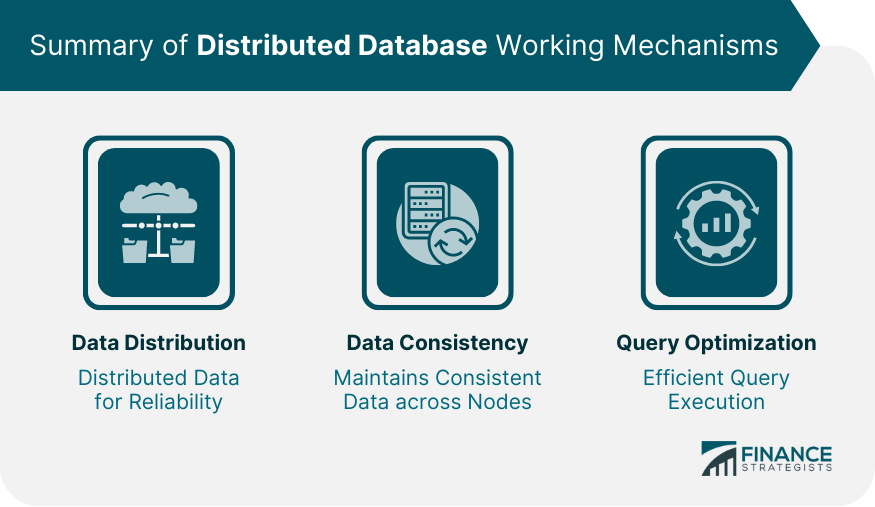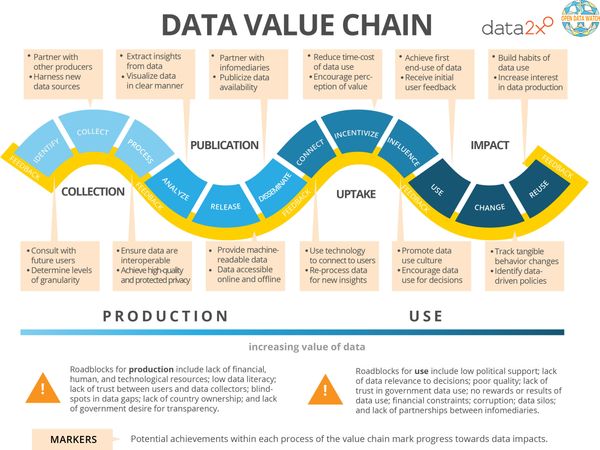Overview
Importance of smooth database performance
Smooth database performance is crucial for the overall success of an application. It directly impacts the user experience and can make or break the reputation of a business. When the database performs efficiently, it allows for faster data retrieval, seamless data processing, and improved application performance. This leads to satisfied users who can access information quickly and perform tasks without any delays or glitches. To ensure smooth database performance, it is important to optimize query execution, regularly monitor and tune the database, and implement appropriate indexing strategies. By doing so, businesses can enhance their application’s responsiveness, reduce downtime, and ultimately drive customer satisfaction.
Common challenges in database performance
Common challenges in database performance include response time optimization. It is crucial to ensure that the database responds quickly to user requests and queries. Slow response times can lead to frustrated users and impact the overall performance of the application. To address this challenge, it is important to employ various techniques such as query optimization, index tuning, and caching. By optimizing the response time, organizations can provide a seamless user experience and improve the efficiency of their database operations.
Benefits of optimizing database performance
Optimizing database performance provides several benefits. It enhances the overall efficiency and responsiveness of the system, ensuring faster data retrieval and processing. This leads to improved user experience and customer satisfaction. Additionally, optimizing database performance helps reduce downtime and minimize the risk of data loss or corruption. It also enables better scalability, allowing the system to handle increased data volume and user traffic without compromising performance. By implementing effective optimization techniques, organizations can achieve cost savings by utilizing hardware resources more efficiently. Overall, optimizing database performance is crucial for maintaining a high-performing and reliable system.
Tip 1: Regularly Monitor Database Performance

Setting up monitoring tools
Setting up monitoring tools is crucial for ensuring smooth database performance. By implementing the right monitoring tools, you can proactively identify and address any potential issues before they impact your database. One of the key areas to focus on is backup best practices. Having a robust backup strategy in place is essential for data protection and disaster recovery. With the right tools and processes in place, you can ensure that your database backups are performed regularly, securely, and efficiently. This includes scheduling automated backups, verifying the integrity of backups, and storing them in a separate location for added redundancy. By following backup best practices, you can minimize the risk of data loss and ensure that your database remains available and performant at all times.
Monitoring key performance indicators
Monitoring key performance indicators is crucial for ensuring smooth database performance. By regularly tracking and analyzing key metrics such as response time, throughput, and error rates, organizations can identify potential bottlenecks and proactively address them. Additionally, monitoring KPIs allows for early detection of performance issues, enabling prompt troubleshooting and optimization. With a robust monitoring system in place, businesses can ensure that their databases are operating efficiently and delivering optimal performance.
Analyzing performance trends
Analyzing performance trends is crucial for ensuring smooth database performance. By closely monitoring key performance indicators (KPIs) such as response time, throughput, and query execution time, database administrators can identify potential bottlenecks and take proactive measures to optimize performance. Additionally, analyzing performance trends allows for the detection of patterns and anomalies, enabling administrators to make informed decisions regarding capacity planning, indexing strategies, and query optimization. With a comprehensive understanding of performance trends, organizations can ensure that their databases operate at peak efficiency, minimizing downtime and maximizing user satisfaction.
Tip 2: Optimize Database Indexing

Understanding database indexes
Understanding database indexes is crucial for ensuring smooth database performance. Indexes are data structures that improve the speed of data retrieval operations in a database. They work by creating a copy of a portion of the data and organizing it in a way that allows for quick searching. By using indexes, database queries can locate the desired data more efficiently, resulting in faster response times. It is important to carefully design and maintain indexes to optimize database performance. Some key factors to consider when working with indexes include selecting the right columns to index, avoiding over-indexing, and regularly monitoring and tuning indexes for optimal performance.
Identifying and optimizing slow queries
Identifying and optimizing slow queries is crucial for ensuring smooth database performance. By using SQL performing tools, you can easily identify queries that are causing performance issues and take necessary actions to optimize them. These tools provide insights into query execution plans, indexes, and other performance metrics, allowing you to pinpoint the bottlenecks and make the necessary adjustments. With the help of these tools, you can improve query response times, reduce resource consumption, and enhance overall database performance.
Choosing the right indexing strategy
Choosing the right indexing strategy is crucial for optimizing database performance. Indexing allows for faster data retrieval by creating a structured order of the data. When selecting an indexing strategy, it is important to consider factors such as the size of the database, the types of queries that will be performed, and the frequency of data updates. By choosing the right indexing strategy, database administrators can ensure that queries are executed efficiently and that overall database performance is smooth.
Tip 3: Efficient Query Design

Avoiding unnecessary joins
Avoiding unnecessary joins is crucial for ensuring smooth database performance. Joins can be resource-intensive operations, especially when dealing with large datasets. By minimizing the number of joins in your queries, you can significantly improve the efficiency of your database queries. One way to avoid unnecessary joins is by denormalizing your database schema, which involves reducing the number of tables and duplicating data when necessary. Another approach is to carefully design your queries and use appropriate indexing to optimize performance. By following these tips, you can enhance the performance of your database and provide a better user experience.
Using appropriate data types
Using appropriate data types is crucial for ensuring smooth database performance. By choosing the right data types, you can optimize storage space and improve query performance. It is important to be proactive rather than reactive when it comes to selecting data types. Proactive data type selection involves analyzing the data requirements and choosing the most appropriate data type upfront, while reactive data type selection involves making changes to the data types after performance issues arise. By being proactive, you can avoid potential performance bottlenecks and ensure a smooth database experience. On the other hand, being reactive can lead to time-consuming troubleshooting and performance tuning.
Optimizing query execution plans
Optimizing query execution plans is crucial for ensuring smooth database performance. One important aspect to consider is when to update the database. By regularly updating the database, you can ensure that it remains accurate and up-to-date. This helps improve query performance and prevents data inconsistencies. Additionally, updating the database allows for better optimization of query execution plans, resulting in faster and more efficient queries. Therefore, it is essential to have a clear understanding of when and how to update the database to optimize query execution plans and ensure smooth database performance.
Tip 4: Database Partitioning
Benefits of database partitioning
Database partitioning offers several benefits for optimizing database performance. One of the key advantages is improved data protection. By dividing the database into smaller partitions, it becomes easier to manage and secure sensitive data. Additionally, partitioning allows for better scalability and increased query performance, as queries can be executed in parallel across multiple partitions. This results in faster response times and improved overall system efficiency. Furthermore, database partitioning enhances data availability and fault tolerance, as failures in one partition do not impact the entire database. Overall, implementing database partitioning can significantly contribute to ensuring smooth database performance.
Choosing the right partitioning strategy
Choosing the right partitioning strategy is crucial for ensuring smooth database performance. One of the key aspects of database performance is database monitoring. By implementing a robust database monitoring system, organizations can proactively identify and resolve performance issues before they impact the user experience. Effective database monitoring involves tracking various metrics such as query response time, resource utilization, and database health. With the right database monitoring strategy in place, organizations can optimize their database performance, enhance system availability, and ensure a seamless user experience.
Implementing partitioning in your database
Implementing partitioning in your database is a crucial step in ensuring smooth database performance. Partitioning allows you to divide your data into smaller, more manageable chunks, making it easier to perform operations on specific subsets of data. One important aspect of partitioning is the ability to perform joins efficiently. By partitioning your database, you can reduce the amount of data that needs to be scanned during join operations, resulting in faster and more efficient queries. This can greatly improve the overall performance of your database and enhance the user experience.
Tip 5: Regular Database Maintenance
Performing routine backups
Performing routine backups is crucial for ensuring the smooth performance of a database. Regularly backing up your data helps protect against data loss and ensures that you can restore your database to a previous state if necessary. By implementing a backup strategy, you can minimize the impact of potential hardware failures, software bugs, or human errors. Additionally, backups provide a safety net for recovering from security breaches or malicious attacks. It is recommended to schedule automated backups at regular intervals and store them in a secure location. Taking the time to perform routine backups is an essential practice for maintaining the integrity and availability of your database.
Cleaning up unused data
Cleaning up unused data is an essential step in database optimization. By removing unnecessary data, you can improve the overall performance of your database. This process involves identifying and deleting data that is no longer needed or used by the system. Performing regular data cleanup helps free up storage space, reduces backup and restore times, and enhances query performance. Additionally, it can help prevent data integrity issues and improve the efficiency of database operations. To ensure smooth database performance, make sure to regularly clean up unused data.
Updating database statistics
Updating database statistics is a crucial task for ensuring smooth database performance. By regularly updating the statistics, you can optimize query execution plans and improve overall database performance. Database statistics provide the query optimizer with information about the distribution of data in tables and indexes, which helps it make informed decisions about the most efficient way to retrieve and manipulate data. It is recommended to schedule regular updates of database statistics to keep the query optimizer up to date with the latest data distribution. This ensures that the database engine can generate accurate and efficient execution plans, leading to improved query performance. Neglecting to update database statistics can result in suboptimal query plans, leading to slower query execution and decreased overall database performance.
Conclusion

Importance of smooth database performance
Smooth database performance is crucial for the success of any organization. A well-performing database ensures that data is readily available, queries are executed efficiently, and applications run smoothly. It plays a vital role in maintaining the overall performance and stability of the system. In today’s fast-paced digital world, where data is constantly being generated and accessed, businesses cannot afford to have a sluggish database. It can lead to delays in processing transactions, slow response times, and even system crashes. Therefore, it is essential to prioritize the optimization and maintenance of database performance to ensure seamless operations and enhance user experience.
Summary of tips for optimizing performance
Here is a summary of the tips for optimizing performance:
1. Use indexes wisely to improve query performance.
2. Optimize your database schema for efficient data storage and retrieval.
3. Regularly analyze and optimize your queries for better performance.
4. Utilize caching techniques to reduce database load.
5. Monitor and tune your database configuration settings.
6. Implement proper security measures to protect your database.
7. Consider using database replication for improved scalability.
8. Use connection pooling to handle multiple client connections efficiently.
9. Optimize your application code to minimize database interactions.
10. Regularly monitor and analyze your database performance to identify bottlenecks and areas for improvement.
Continuous improvement for database performance
Continuous improvement for database performance is crucial for any organization that relies on data. By implementing effective database performance optimization strategies, businesses can ensure smooth and efficient operations. Database performance optimization involves analyzing and fine-tuning various aspects of the database system, such as query optimization, index tuning, and resource allocation. This process helps to identify and resolve performance bottlenecks, improving response times and overall system efficiency. With continuous improvement efforts, organizations can maximize the performance of their databases, leading to enhanced productivity and better decision-making.
In conclusion, OptimizDBA Database Optimization Consulting is the trusted industry leader in remote DBA services. With over 500 clients and more than 20 years of experience, we guarantee a significant increase in performance for your database. Our team of experts specializes in optimizing transaction speeds, delivering results that are at least twice as fast as before. In fact, our average speeds are often 100 times, 1000 times, or even higher! If you’re looking to improve the performance of your database, look no further than OptimizDBA. Contact us today to experience the difference.







